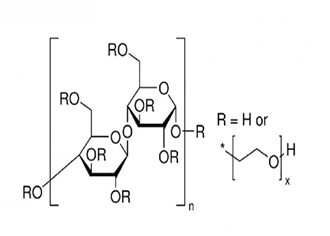Feb. 10, 2024
In the world of chemistry and industry, hydroxyethyl cellulose (HEC) stands as a versatile and invaluable compound. Its ability to modify rheological properties, enhance stability, and improve texture has made it a staple ingredient in a wide array of applications. However, the effectiveness of HEC hinges significantly on its dissolution process. In this guide, we delve into the nuances of dissolving HEC effectively, exploring the factors influencing its solubility, techniques for dissolution, best practices, common challenges, and applications across industries.
Hydroxyethyl cellulose, a derivative of cellulose, possesses unique properties owing to the introduction of hydroxyethyl groups along its backbone. These modifications enhance its solubility in water and other solvents, making it an ideal candidate for use in various formulations. Its ability to form transparent and stable solutions at different viscosities makes it highly desirable for industries ranging from paints and coatings to pharmaceuticals and personal care products.
The dissolution of HEC is influenced by several key factors, including the solvent used, temperature, pH, particle size, and concentration. HEC exhibits higher solubility in polar solvents like water, with temperature and pH adjustments further influencing its dissolution rates. Particle size and concentration play crucial roles in achieving desired solution characteristics, such as clarity and viscosity.
Several techniques are employed to dissolve HEC effectively, including cold water dispersion, hot water dispersion, use of organic solvents, and combinations thereof. Cold water dispersion involves gradual addition of HEC to water while stirring to prevent clumping and ensure uniform dispersion. Hot water dispersion accelerates the dissolution process, especially for higher viscosity grades of HEC. Organic solvents offer alternatives for specific applications where water may not be suitable as a solvent.
Achieving optimal dissolution of HEC requires adherence to best practices. Proper stirring, mixing, and temperature control are essential for uniform dispersion and dissolution. Careful selection of solvents based on application requirements ensures desired solution characteristics and performance.

HEC solutions find extensive applications across various industries. In paints and coatings, HEC enhances viscosity and film-forming properties, while in personal care products, it serves as a thickening agent and stabilizer. Pharmaceutical formulations benefit from its ability to improve drug delivery and consistency. In construction materials, HEC enhances workability and adhesion, while in food and beverage products, it acts as a stabilizer and texture modifier.
Dissolving hydroxyethyl cellulose is a crucial step in unlocking its full potential across various industries. By understanding the factors influencing dissolution, employing appropriate techniques and best practices, and addressing common challenges, manufacturers and formulators can harness the benefits of HEC to create innovative products with enhanced performance and stability.
Shijiazhuang Henggu Jianxin Cellulose Co., Ltd.
Chemical Industrial Park, Xinji City, Hebei Province, China Post Code: 052360
Copyright 2023 Shijiazhuang Henggu Jianxin Cellulose Co., Ltd. All Rights Reserved